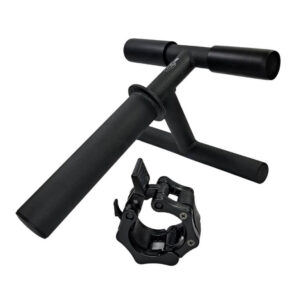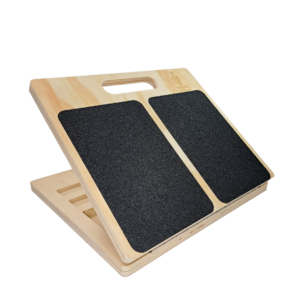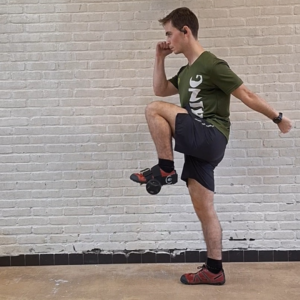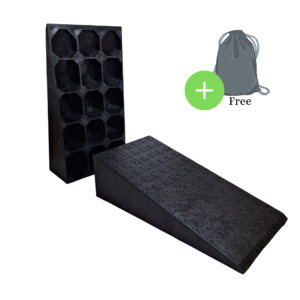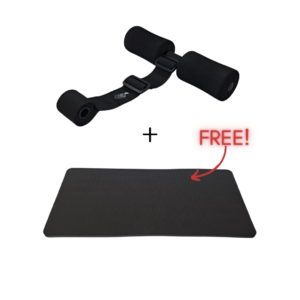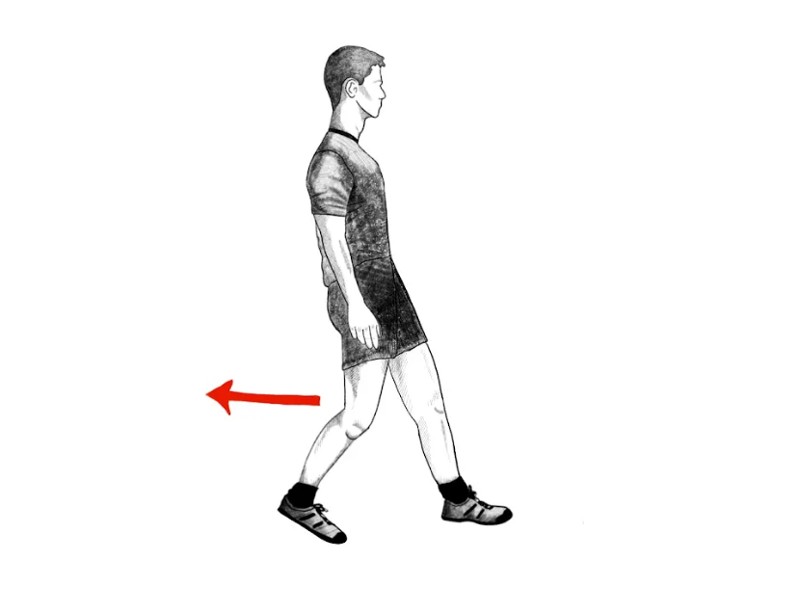
How can something as simple as backward walking be so beneficial, especially if you’re prone to knee injuries? Well, as it turns out, walking backward, no matter how awkward it may seem, has not only rehab but injury-prevention value as well.
If you ever tried a decent knees-over-toes program, you must have heard of this exercise.
So, let’s shed some light on the benefits of this exercise, and let’s see how you can progress once you get used to it.
Table of Contents
Walking backward is more complex than you think
I dare you to try walking backward, consistently, without stumbling along the way. Do it for 30 meters, and see how it feels. Chances are, if you have never practiced walking backward, you will have some “hiccups” along the way. If you really think about it, it’s no easy feat.
No wonder it has therapeutic value for people in rehab.
Which muscles does walking backward use?
Going in the opposite direction gives us the opportunity to target the muscles responsible for stabilization and slowing us down when we propel forward.
Essentially, we get to train the muscles that help us land when running or jumping, and help us keep balance during sudden direction changes.
Backward walking targets the following muscles the most:
- Quads – specifically the vastus medialis oblique (VMO) above the knee
- Posterior muscle chain – the hip-extension nature of the movement mostly targets the glutes
- Tibialis anterior – a muscle that helps with proper landing and ankle health
- Finer muscles of the foot – every arch of the foot is engaged

The benefits of backward walking
The main long-term benefit of backward walking for any athlete, amateur to hybrid, is none other than injury prevention. Besides being a great knee rehab tool, this exercise will bulletproof your body against the repetitive stress on your ankles, knees, and hips.
And by repetitive stress, I’m not talking about exercise only – a sedentary lifestyle is arguably more stressful on your joints, in the long term.
In short, the benefits of backward walking include:
- Stronger and more resilient knees
- Better foot and ankle stabilization
- General increase in acceleration and deceleration while running
- Greater proprioception and balance
- Sturdier tendons and fascia around the knee
Does walking backward build glutes and quads?
It absolutely does.
Backward walking helps with quad (VMO) development on the anterior side of the leg. On the posterior side, it also targets the glutes due to their hip extensor role in the movement. Lastly, as a bonus, you can expect a significant development in your shins.
How to progress from backward walking
Jokes aside, if you’re a persistent (and mobile) athlete, backward walking won’t be challenging for long.
There are a couple of ways to make walking backward more challenging:
- Reverse sled pull
- Use a treadmill and resistance band, as shown in the video below
In Conclusion
As you can see, backward walking has a lot of benefits when it comes to knee health, ankle stability, quad development, and even tendons around the knee.
If you value your overall health, especially if you train hard, you have to try this exercise. If you get the hang of it quickly, up the game with the progressions we talked about.
And, yes, it will look and feel weird for a short while. But that’s fine, considering the enormous upside.
Get the best injury-prevention exercise equipment at our shop:
Above all, a storyteller. Then comes marketing, branding, writing music, powerlifting, and woodworking.


